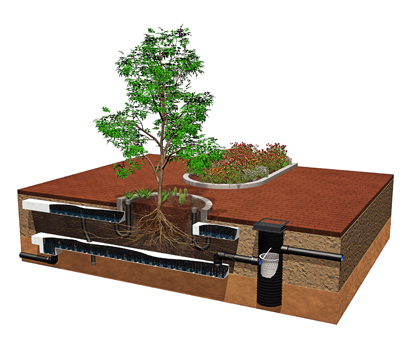Urban Trees

Trees
It has been widely recognised that trees are able to improve the quality of an urban environment and contribute a wide range of additional socio-economic and health benefits. This includes improving air quality and the micro climate around them, through reducing wind speeds, absorbing sunlight, cooling the air and shading adjacent buildings and surrounding ground areas. The magnitude of these effects is typically dictated by the size of the tree canopy, which is dependent on the tree species and its maturity.
Within a SuDS context, tree systems may be installed to receive surface water run-off from adjacent areas, in a similar manner to a traditional gully. As with other bioretention vegetation, trees may be planted within a range of SuDS to enhance the system performance, as a distinctive feature or as a standalone system (i.e. InfraGreen Tree Box). Linked linear installations can also be created through connecting multiple tree pit installations, either via surface (i.e. swale) or below ground (e.g. continuous geocellular installation) drainage elements.

Green infrastructure X


